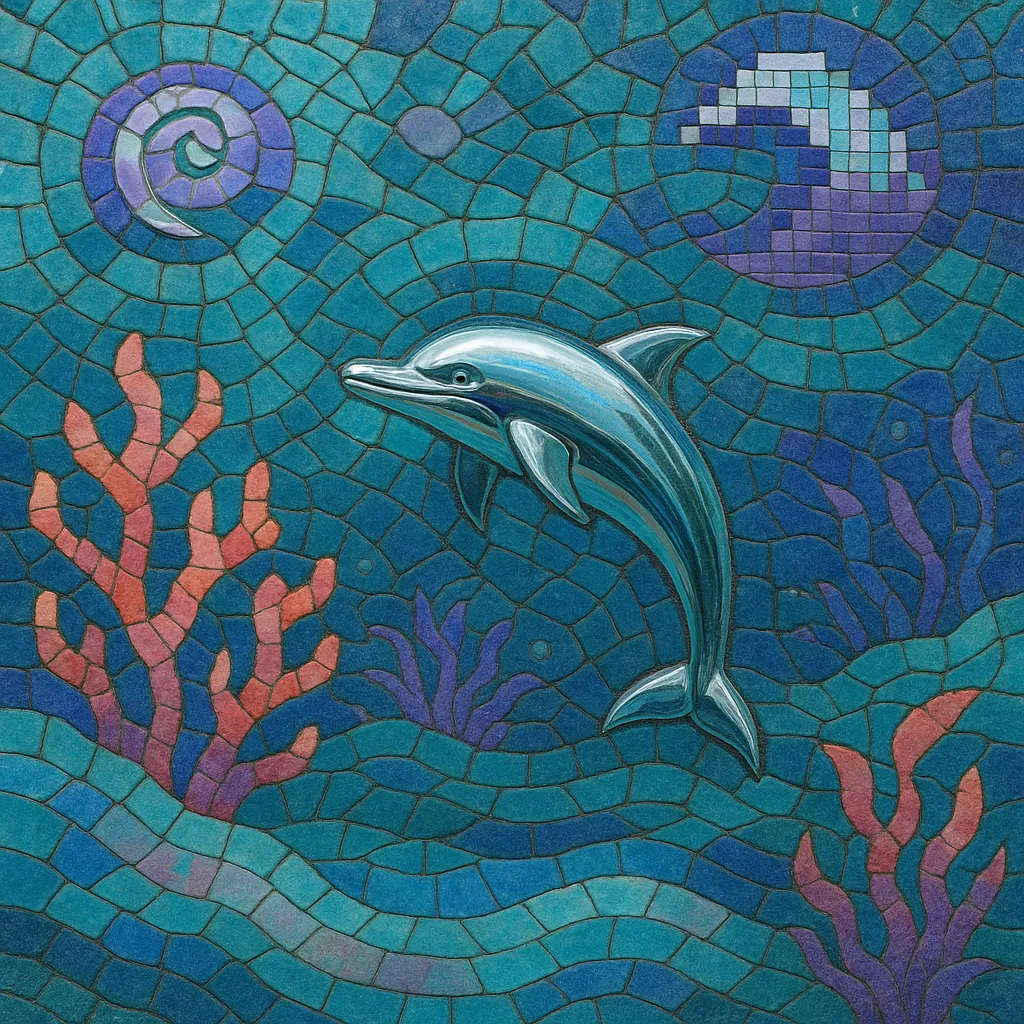Seapunk is an early-2010s internet-born microgenre and multimedia aesthetic that fuses retro-rave sonics with Y2K-era, ocean-themed visuals. Its sound blends 1990s house and trance riffs, chopped-and-screwed and vaporwave-adjacent sampling, splashy 808/909 drums, and glossy, “watery” synth textures.
The visual world is as important as the music: turquoise/teal palettes, 3D chrome dolphins, coral gradients, pixel seas, and GIF-era net art. Together, these define a playful, nostalgic, and cyber-aquatic identity that celebrates both rave euphoria and web-native DIY culture.
Seapunk crystallized in the early 2010s on social media (especially Tumblr and Twitter), coalescing around a small, tightly networked community of producers, DJs, and visual artists. It emerged from the same online petri dish that incubated vaporwave, witch house, and chillwave, but focused its identity on aquatic futurism and retro-rave nostalgia. The term and meme spread quickly, and a loose scene formed around releases and parties circulating via netlabels and file-sharing.
The scene took equal inspiration from 1990s house/trance and web-age collage. Musically, tracks combined bright piano stabs, supersaw leads, junglist/footwork percussion ideas, chopped vocals, and ocean SFX (waves, bubbles, dolphins). Visually, ubiquitous 3D-rendered dolphins, seafoam gradients, and chrome textures delivered a cohesive, tongue-in-cheek, cyber-nautical brand.
By 2012–2013, seapunk’s look briefly surfaced in mainstream pop culture. TV performances and music videos adopted the teal-and-dolphin motif, signaling how quickly internet micro-aesthetics could be sampled by larger pop ecosystems. Even where the music itself wasn’t strictly seapunk, the aesthetic vocabulary became temporarily ubiquitous.
The core community remained small and short-lived, but seapunk’s impact echoed across later internet-native pop. Its bright, plasticky, euphoric sound-design and maximalist net art fed into subsequent waves of hyperpop/bubblegum bass and the broader “internet music” sensibility—where sound, meme, and design move in lockstep. Today it’s remembered as a defining snapshot of early-2010s online club culture and aesthetics.


